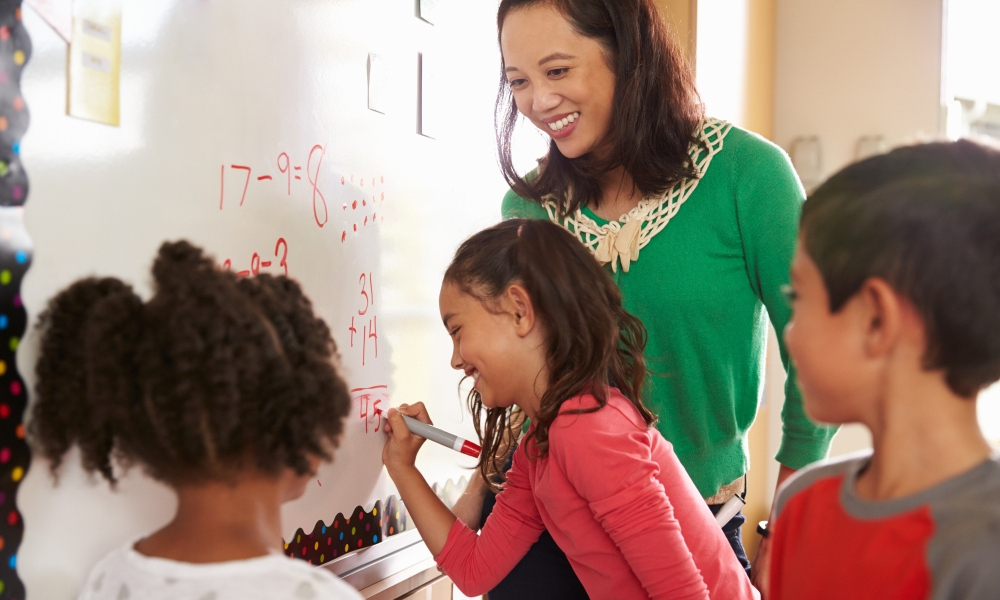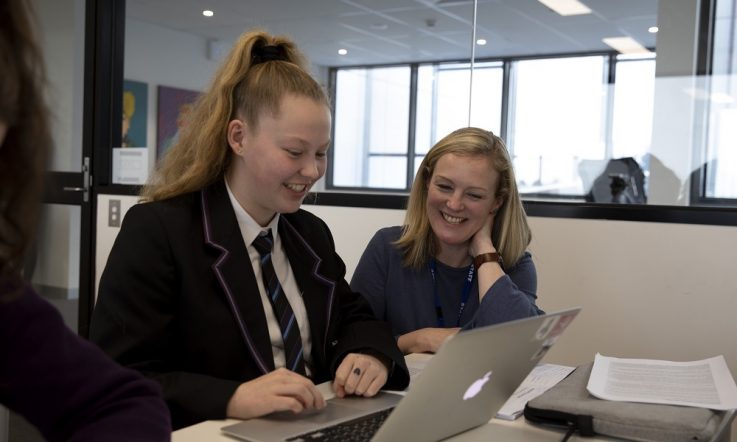The school holidays are fast approaching in Australia and it's a chance to reflect on the past term of work. As a teacher, it can be easy to get caught up in the busyness of the day-to-day work of the classroom, and difficult to find time to reflect on your health and put strategies in place to look after yourself. In today's article, we explore one technique for improving wellbeing – practicing mindfulness. We speak to mindfulness expert, Dr Craig Hassed to find out more.
Teachers who practice mindfulness in the classroom tend to be better organised, more attentive to students and better communicators, Associate Professor Craig Hassed says.
Hassed is a mindfulness expert and a Senior Lecturer in the Department of General Practice at Monash University. His teaching, research and clinical interests include mindfulness-based stress management, mind-body medicine, meditation and health promotion.
He says that mindfulness could be seen as a form of meditation but it's also a way of being. ‘The two essential elements of training mindfulness, I think, are attention and attitude,' Hassed says.
‘So attention – a capacity to pay attention in the present moment to what's happening … but attitude – to cultivate an attitude of openness, acceptance, curiosity, of equanimity, with which we're observing those events.'
Hassed says the area of mindfulness research in education is expanding quite rapidly. Research shows that when students learn to be more mindful, their mental health improves, they are more resilient and have better memory retention. They also tend to form stronger relationships and communicate more, Hassed says.
‘For teachers, there are similar kinds of findings. [Mindfulness results in] better mental health and capacity to manage stress, and better resilience, which are all important in their own right. But also, teachers who are more mindful tend to be more organised in the classroom, more attentive to the students and so it actually affects how the teacher communicates and teaches as well,' he adds.
So, how do you practice mindfulness?
According to Hassed, there are both formal and informal practices of mindfulness. One simple strategy, he suggests, is before setting out for school in the morning, you make sure you punctuate your day with a full stop.
‘What I mean by that is, you know, if you don't punctuate a book, the book becomes a blur, it becomes meaningless, and it's a bit like that with our life. If we don't punctuate it with spaces, it becomes a bit of a blur. So you might punctuate your day with say, two full stops. So, that is, practice five or 10 minutes of mindfulness meditation before you get into your day, before you set out for school in the morning.
‘But you might also, when you get home, have five or 10 minutes at the end of the day – between the school day and then whatever you're going to do that evening. During the day, you may not have time for a full stop, but you might just take a number of commas.'
A comma, Hassed explains, may be a moment between classes where you give yourself 30 seconds to centre yourself, walk attentively to the classroom, or enter the room with purpose.
‘If we've got a lot on our plates, you know, we might be walking from one building in the school to another and we fill that two minute walk with worry about how much we've got to do and will I get through it all today? What am I going to cook for dinner tonight? Rather than just walking mindfully and having a two minute space in your day. We have to reduce that mental or cognitive load on a regular basis to give the mind space to then be able to engage with the next complex thing we need to do, like manage a classroom.'
Hassed says teachers can also practice mindfulness by being calmer in their interactions with students, and avoiding multi-tasking altogether.
‘You need to be able to efficiently switch attention to be awake and aware as a teacher, but multi-tasking – trying to do multiple, complex things at exactly the same time – is fraught with disaster. It increases the mental load, it increases stress, impairs communication and impairs memory. So a teacher shouldn't do it and they shouldn't have their students doing it,' he says.
It's also important, according to Hassed, to be aware of what's going on in the classroom. ‘Classrooms can be pretty busy places but sometimes they're overly busy and overly noisy and a teacher needs to be present enough to actually see what their classroom needs,' he says. ‘Perhaps at any given moment, it might be a little bit of quiet or a little circuit breaker, time to stop.'
Being mindful also improves communication between the teacher and students.
‘If a teacher is more mindful when they're communicating with the students, the students feel better heard but also it helps the students to engage their attention more effectively, so it helps the students to learn. So it improves the teaching and the learning process when both have got their attention better engaged.'
Tackling difficult situations
When we're not mindful, Hassed says our mind switches to a different mode called ‘default mode', which has a direct impact on our ability to learn.
‘That's where we're worrying about the future or reliving the past or having an internal conversation with ourselves,' he says.
‘A teacher might be trying to teach some mathematics, and the student is not getting it because the student's attention is not on the mathematics, the student's attention is on an internal dialogue they're having with themselves about “why I'm so hopeless” and “I'm stupid” and “I can't do maths” and “I wish I didn't have to learn it” etcetera.
‘The student is not able to actually engage their attention with what the teacher is trying to show them. So if the teacher can help the student to be aware of that, and cut through the internal dialogue and to engage their attention with what's on the page in front of them, all of a sudden a lot of kids discover that maths is not quite as hard as they thought.'
Hassed says that being more mindful can also boost our resilience and ability to tackle difficult situations.
‘Very often, in anticipation, we anticipate things going badly, we relive things from the past that didn't go well, and that zaps a lot of energy. It zaps a lot of motivation and it also makes it harder for us to learn from our experience.
‘So we really need to pay attention to experiences, even the uncomfortable ones so that we learn something from them. But that capacity to observe, to learn, to notice – but not to get caught up in or attached to the things happening around us – gives us a lot more freedom to respond,' he says.
What are some ways you could practice being more mindful in your own classroom? Are these strategies something you could model for students as well?
Associate Professor Craig Hassed will be co-presenting a course titled ‘Mindfulness, Voice and Presentation Techniques for Teachers’ at Monash University on 23 October 2019. Visit the website for more information.



